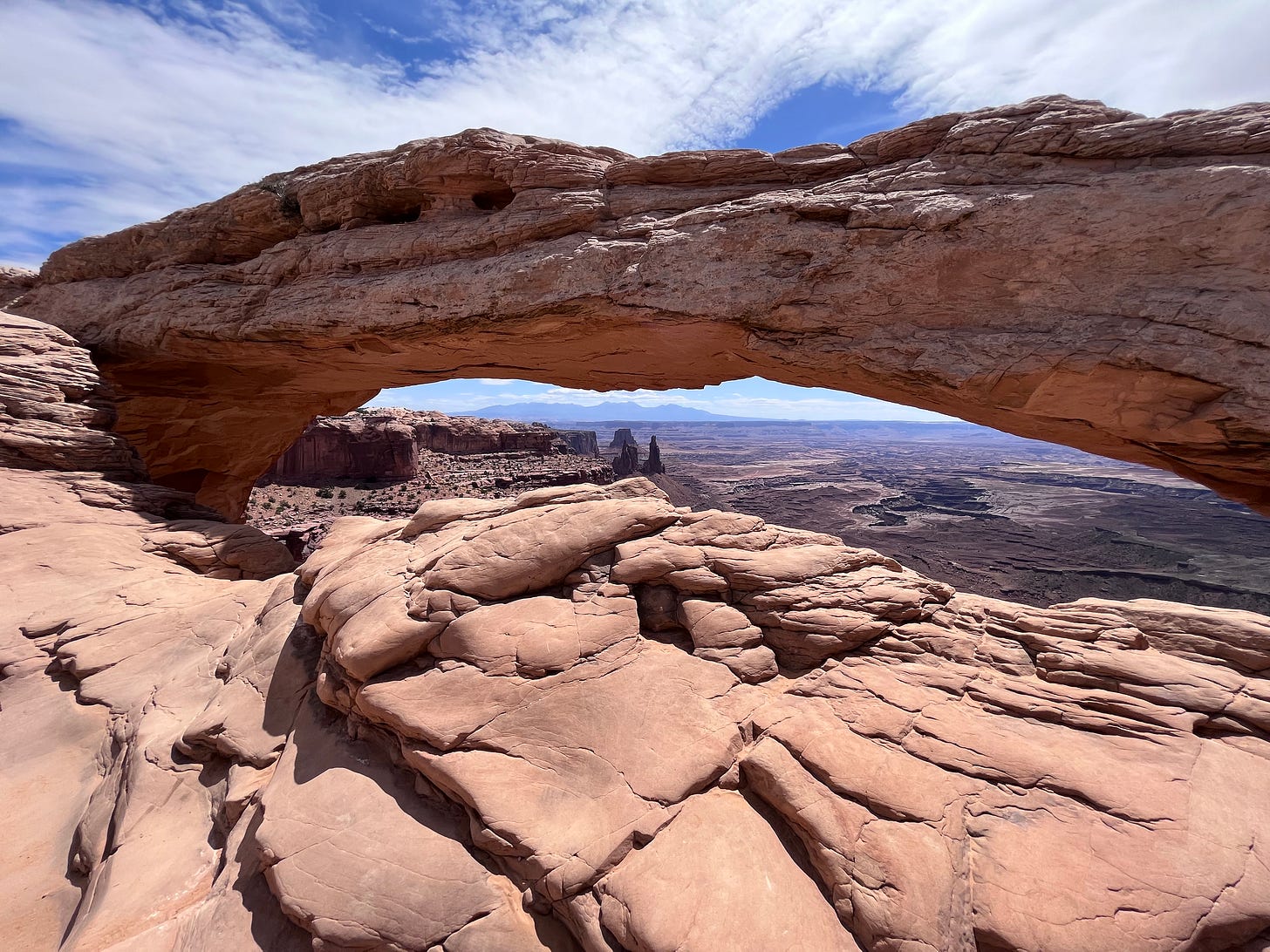Editorial Note— This is a short-form recurring feature that is a bit different from my other posts. The main idea of my blog is that human technological progress and our relationship with nature should be understood together, even though they are often treated like two completely separate, even opposed things. These quick nature features are meant to share appreciation for the natural world, build ecological literacy, and remind us why human flourishing should always work alongside the flourishing of nature.
One of my favorite things about the desert is how the monumental vistas are recreated in miniature all over the place. Arches like Mesa and Delicate have thousands of minuscule repetitions on the desert floor and along canyon walls. One example of this phenomenon is cryptobiotic soil which often looks like ancient, weathered pinnacles or the spires of tiny abandoned civilizations.
Cryptobiotic soil. What a great name! Crypto means concealed or secret, and used as a prefix it describes the word stem that follows: biotic. Secretly living soil. It’s a very human trait to suspect that natural things are somehow secretly alive. What a delight that our suspicions so often prove true.
Cryptobiotic soil provides the foothold for desert plant communities. The thin, hard crust prevents erosion from wind and water, instead keeping more moisture and nutrients locked in. Moss, lichen, micro fungi, and green algae are some of the tiny living things that can create room for larger organisms like plants to grow. It’s pretty amazing what nature can do with patience and time, even in the harshest environments.

The ridged black soil you see in the picture above is full of the hustle of microscopic lifeforms. The soil was formed over decades or even hundreds of years by organisms too small to see and it helps the desert hold itself together. Bacteria in this soil can photosynthesize when they have enough water, and as these tiny organisms move they release filaments that bind and hold the arid soil together.
Once you learn to recognize it, you can see secretly living soil all over the place. Young soils can appear as just a thin, fragile sheen above the sand, or it could look like black bumps, multiple inches tall, with white lichen growing on top. On sand dunes sometimes the cryptobiotic soil is concealed beneath a layer of windblown sand. The stage of development of the soil can give you clues about how well-established the rest of the plants and animals in the area are. A coyote lives for 6-8 years, which is about how long it takes cryptobiotic soil to start recovering after it’s been crushed. You could help ensure the presence of blooming cactuses, desert tortoises, and wily coyotes by simply choosing your step well.
It’s one of the first things a young desert rat1 in training learns—don’t walk on the cryptosoil. Across the Colorado Plateau, 70-80% of living ground cover can be coated in biological soils.
So how do you enjoy the desert without destroying it? Even the most conscientious explorer has been lured off trail before and it’s okay if you meander a little bit too. If you can’t resist the call of the wild, walk along the bottom of washes, on slickrock, or at least on previously disrupted soil. Life seems rarer in the desert, making us appreciate it more when we see it. It’s everywhere if you know where to look.
This is what we call someone who makes living and playing in the desert a way of life. Becoming a desert rat is one of several viable life paths for young adults, alongside college and moving to the Dakotas to work the oil fields.





